Colorado’s Denver region is on track to gain up to a million people by 2025. Keeping the region moving and accommodating this future growth is the mission of the Regional Transportation District (RTD). The solution – a multi-billion dollar comprehensive transit expansion plan called FasTracks. This sales tax initiative, passed by voters in 2004, will add 122 miles of new commuter rail and light rail, 18 miles of bus rapid transit, 21,000 new parking spaces at light rail and bus stations, and enhance bus service creating easier connections across the region. Commuter rail and bus rapid transit will be new to the area. The historic Denver Union Station will serve as the multi-modal heart for the new rail lines that will help move commuter rail and light rail riders to destinations throughout the eight-county districts that RTD serves. Bus rapid transit will help to provide swifter and more flexible service.
And where will these new Denverites live, work and play? The RTD is actively participating in plans for transit oriented development (TOD) at and around its transit stations as part of the program. The addition of a mixed use environment will produce a synergy allowing people to live in walkable and sustainable communities that support the new and improved transit system.
The program has been hard at work with one rail line open, four rail lines, a bus rapid transit project and the redevelopment of Union Station in construction and another rail line to begin construction in 2014. With the opening of the West Light Rail Line in April, the public is now starting to see the final results of their tax dollar contributions.
The planned transit improvements have also created a huge economic boost and kept the “Mile-High City” and its surrounding communities busy. The FasTracks Program is credited with creating 11,000 full-time jobs since 2005.
The Collaborative Services blog received such a great response for our September theme of BIG projects that we have decided to keep the momentum going as we move into October. This week we talked with FasTracks Public Information Manager Pauletta Tonilas to learn more about the multi-modal program, what has been accomplished so far, and how public participation has been a guiding force behind its success.
– – –
How will FasTracks provide more efficient travel in the Denver region?
FasTracks will provide the public with more transportation options with easy, convenient bus-rail connections. RTD’s parking facilities at transit stations will double through FasTracks, making it easy for people to use the system. RTD’s existing transit system takes many people off the road already. RTD’s current ridership is about 325,000 passenger trips per day, resulting in more than 100 million passenger trips per year. With the buildout of FasTracks, RTD is projected to provide 600,000 passenger trips per day by 2035 – a significant increase in the number of commuters who choose to use RTD services in lieu of driving their cars to and from work, school, appointments and leisure activities.
What were some of the challenges in securing public support for FasTracks?
In 1997, RTD tried to pass a transit expansion sales tax initiative called Guide the Ride. The measure failed largely because people didn’t feel the plan was detailed enough. RTD went back to the drawing board and conducted initial studies on the various transit corridors that had been identified by the region’s Metropolitan Planning Organization as priorities for transit improvements. These studies provided enough detail to help RTD define the plan that was eventually named FasTracks.
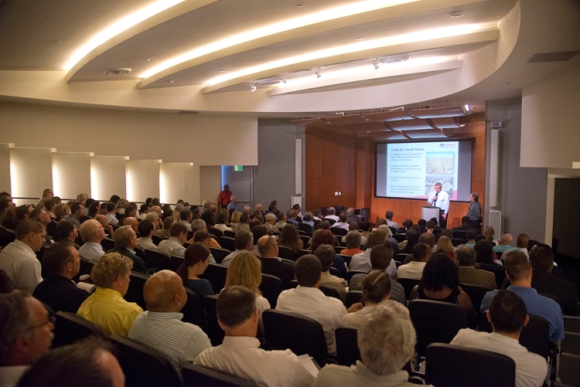
Members of the public gather to learn more about the FasTracks program at a pre-proposal meeting.
(Credit: Regional Transportation District)
The FasTracks plan showed the public exactly what they would be getting if they passed the 0.4 percent sales tax increase to fund the transit plan. Part of RTD’s education about the FasTracks plan was a map that showed where the transit lines, stations and Park-n-Rides would be built. Elected officials across the region collaborated to build support for the plan. All 31 mayors from the region unanimously supported FasTracks as well as the business community and environmental groups. Together they publicly endorsed FasTracks and campaigned on behalf of the plan. Former Denver Mayor and current Colorado Governor John Hickenlooper became the “face of FasTracks,” appearing in campaign commercials and ads. Many cities and transit agencies across the country have appealed to RTD and its regional partners to learn from our unique brand of regional collaboration that ultimately resulted in FasTracks being passed by voters in 2004 by a margin of 58% to 42%.
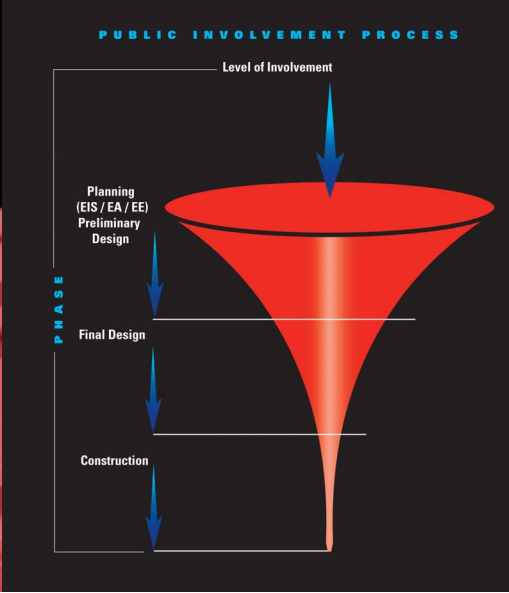
This diagram shows that the opportunity for public involvement is greatest at the beginning of a project and narrows as the project progresses.
(Credit: Regional Transportation District)
What type of public involvement efforts have been initiated and how has the public input received been incorporated into the Program?
The environmental study processes on each of the FasTracks transit lines included an extensive public involvement component, providing the public with opportunities to provide input into how the transit project would be integrated into their community. This happened through public meetings, small stakeholder meetings, task forces and working groups, and comments through the FasTracks website. As projects transition from the environmental planning phase to the design and construction phase, public involvement transitions more to public information and outreach to keep the public informed and engaged in the progress of the projects. Some of the public input that has helped shape FasTracks are changes in some station locations, station and parking access, station design elements, and changes to the interior design of RTD’s new commuter rail cars.
What construction work has been accomplished so far?
The first FasTracks rail line, the West Light Rail Line, was completed and opened to the public in April 2013. In addition, construction is progressing on four other rail lines, a bus rapid transit line and the Denver Union Station transit-oriented development. Another rail line is expected to begin construction in 2014.
What have been some lessons learned along the way?
Implementing a massive transit infrastructure program like FasTracks comes with many lessons learned. One lesson is that agencies need to build ample time into their project schedules for environmental study processes that define all of the elements of a transit corridor before construction can begin. Also, when agencies need to work with the railroads on right-of-way issues, those negotiations are very complex and often take years to complete. Another lesson learned is to set expectations that things will change as projects evolve, including project costs. Given the economic challenges that emerged as a result of the recession, public agencies are having to think differently about how to build out their infrastructure projects. So, one of the biggest lessons learned that RTD can offer is the importance of innovation in financing, building and operating projects.
Transit Oriented Development is an important component to transit improvement projects like FasTracks. How is the Regional Transportation District helping to facilitate Transit Oriented Development opportunities as part of the FasTrack program?
RTD has a Strategic Transit-Oriented Development (TOD) Plan that outlines RTD’s role in the development of livable, sustainable communities around our transit stations which are no longer just places to board buses and trains. RTD is playing a more proactive role in contributing to the development of sustainable, walkable communities where people live, work and play.
Part of RTD’s TOD plan is a TOD Pilot Program where RTD is partnering with local governments, businesses, city and state agencies and forward-thinking developers on mixed-use developments along our expanding rail system. RTD has identified four station areas with high potential for creating communities where RTD could play a role in implementation. Part of the effort is to explore how the various partners can leverage resources through public-private partnerships.
It is allowing planners and commuters to imagine transit systems that don’t just shuttle people from place to place, but offer compelling new reasons for them to stop at points in between. And, at its core, TOD makes it possible for bus and rail stations to become integral, unique destinations that showcase the character of a community.
One feature on the FasTracks website is called Stories Along the Line. This unique feature shares little known facts about locations that will be part of new projects. How did this idea originate and what stories do you hope to feature in the future?
Because of the transient nature of our society, it can help create a feeling of community if residents have some idea of how their neighborhoods have evolved. Stories Along the Line capitalize on people’s natural interest in their community history and progress, and the tie to FasTracks. The stories personalize interesting, historical and unique community information. Here is a summary of stories that will be featured through the end of the year:
September: Gold Line
Why is it called the “Gold” Line? This article will feature historical facts about the Arvada and Wheat Ridge communities and the tie to this rail line’s name.
October: Commuter Rail Maintenance Facility
A look at how this new state-of-the art facility will keep FasTracks commuter rail trains running smoothly.
November: I-225 Rail Line – VA Hospital
To commemorate Veteran’s Day, this article will focus on the Veteran’s Administration Hospital located along the I-225 line. Who does it serve and how FasTracks will make it easier for veterans to reach the hospital.
December: East Rail Line – Northfield Development
The Northfield area was once the site of one of the top five busiest airports in the country, now it’s home to one of the most progressive housing communities in the nation, and FasTracks is building a new station at Northfield on the East Line to the current airport, to accommodate this growing population center.
– – –
We look forward to following the FasTracks Program’s progress and watching the Denver region grow with its transit system.
Liz Faris, Account Manager
Collaborative Services, Inc.

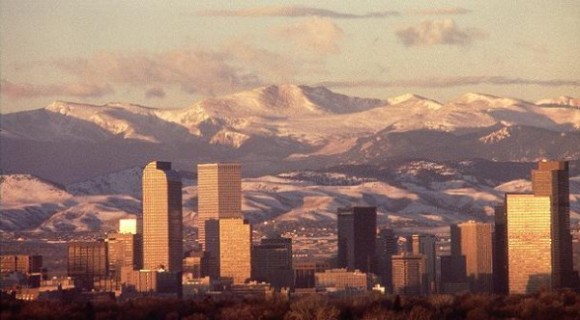

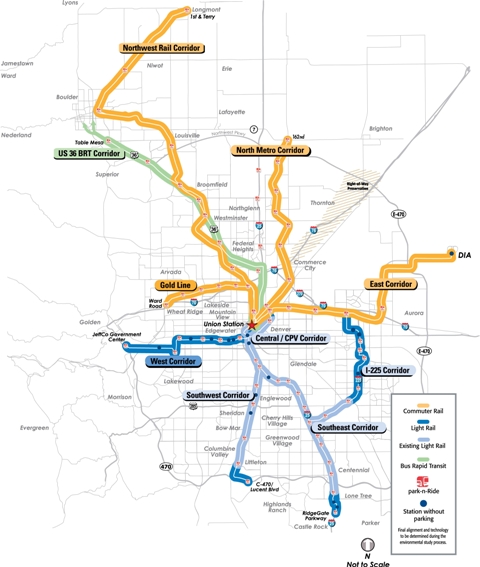

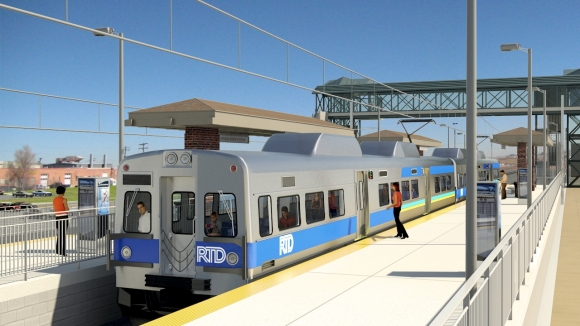
Recent Comments